(单词翻译:单击)
Ancient Egypt stood as one of the world's most advanced civilizations for nearly 3,000 years and created a culture so rich that it has spawned its own field of study. But while Egyptian art, architecture and burial methods have become enduring objects of fascination, there is still a lot you probably don't know about these famed builders of the pyramids. From the earliest recorded peace treaty to ancient board games, find out 11 surprising facts about the Gift of the Nile.
说到古埃及,人们能想到的著名人物除图特王外,恐怕就剩埃及艳后克娄巴特拉七世了。尽管克娄巴特拉出生于亚历山大,但她其实是马其顿的后人,而马其顿人则是亚历山大大帝最信任的上将托勒密一世的后裔。从公元前323年到公元前30年,托勒密王朝一直管辖着埃及,其大部分领袖都出身于希腊文化背景。而克娄巴特拉之所以如此有名,是因为她是托勒密王朝第一批会说埃及语的王室成员。
1. Cleopatra was not Egyptian.
埃及艳后并非埃及人
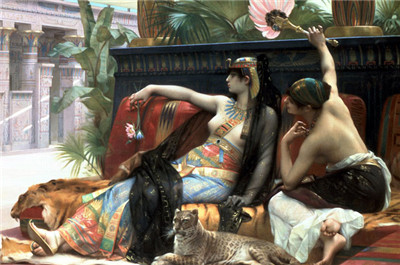
Along with King Tut, perhaps no figure is more famously associated with ancient Egypt than Cleopatra VII. But while she was born in Alexandria, Cleopatra was actually part of a long line of Greek Macedonians originally descended from Ptolemy I, one of Alexander the Great's most trusted lieutenants. The Ptolemaic Dynasty ruled Egypt from 323 to 30 B.C., and most of its leaders remained largely Greek in their culture and sensibilities. In fact, Cleopatra was famous for being one of the first members of the Ptolemaic dynasty to actually speak the Egyptian language.
说到古埃及,人们能想到的著名人物除图特王外,恐怕就剩埃及艳后克娄巴特拉七世了。尽管克娄巴特拉出生于亚历山大,但她其实是马其顿的后人,而马其顿人则是亚历山大大帝最信任的上将托勒密一世的后裔。从公元前323年到公元前30年,托勒密王朝一直管辖着埃及,其大部分领袖都出身于希腊文化背景。而克娄巴特拉之所以如此有名,是因为她是托勒密王朝第一批会说埃及语的王室成员。
2. The ancient Egyptians forged one of the earliest peace treaties on record.
古埃及人制定了史上最早的和平协定
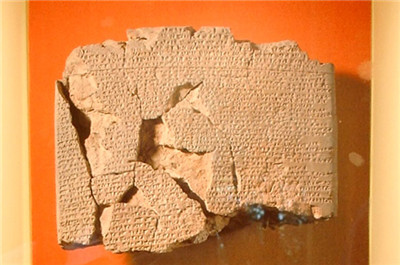
For over two centuries the Egyptians fought against the Hittite Empire for control of lands in modern day Syria. The conflict gave rise to bloody engagements like 1274 B.C.'s Battle of Kadesh, but by time of the pharaoh Ramses II neither side had emerged as a clear victor. With both the Egyptians and Hittites facing threats from other peoples, in 1259 B.C. Ramses II and the Hittite King Hattusili III negotiated a famous peace treaty. This agreement ended the conflict and decreed that the two kingdoms would aid each other in the event of an invasion by a third party. The Egyptian-Hittite treaty is now recognized as one of the earliest surviving peace accords, and a copy can even be seen above the entrance to the United Nations Security Council Chamber in New York.
为了争夺如今叙利亚所在的那片土地,古埃及和赫梯帝国展开了长达两个世纪的战争。其中不乏腥风血雨的战斗,如公元前1274年的卡迭石战役(Battleof Kadesh)。但一直到拉美西斯二世,双方都没争出个高下,况且当时两方都还得面对各自的内忧外患。于是在公元前1259年,拉美西斯二世与赫梯国王哈图西里三世制定了一个举世闻名的和平协定。协定终止了两国的冲突,并规定:若两方中任何一方遭到第三国入侵,则另一方将向其提供援助。该协定是现存最早的和平协定。如今,在纽约联合国安理会会议厅入口处,你还能看到这份协定的副本。
3. Ancient Egyptians loved board games.
古埃及人钟情桌面游戏
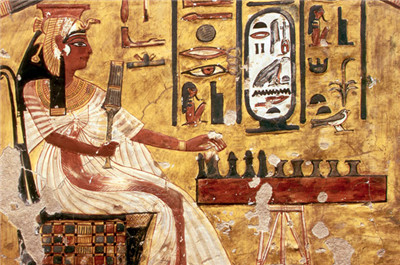
After a long day's work along the Nile River, Egyptians often relaxed by playing board games. Several different games were played, including "Mehen" and "Dogs and Jackals," but perhaps the most popular was a game of chance known as “Senet.” This pastime dates back as far as 3500 B.C. and was played on a long board painted with 30 squares. Each player had a set of pieces that were moved along the board according to rolls of dice or the throwing sticks. Historians still debate Senet's exact rules, but there is little doubt of the game's popularity. Paintings depict Queen Nefertari playing Senet, and pharaohs like Tutankhamen even had game boards buried with them in their tombs.
在尼罗河畔劳作一天后,埃及人通常用玩桌游的方式娱乐身心,而且游戏类别还多种多样,有“盘蛇图”、“狗和豺”等。其中最受欢迎的要数以运气取胜的“赛尼特”,这种游戏可追溯至公元前3500年,需要一个画着30个格子的长桌,每个玩家都有一套棋子,然后根据执骰子或抛木棍来走棋。关于“赛尼特”的游戏规则,各史学家众说纷纭,不过没有任何人质疑它受欢迎的程度,证据就是涅弗尔塔里王后玩“赛尼特”的场景出现在了画作中,甚至连法老图坦卡蒙的墓室里都有玩“赛尼特”的长桌。
4. Egyptian women had a wide range of rights and freedoms.
古埃及女性享有广泛的权利与自由
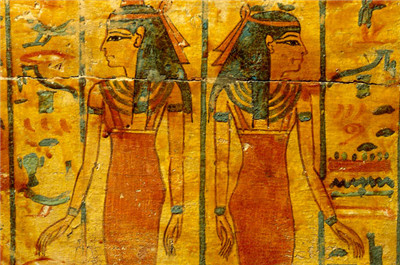
While they may have been publicly and socially viewed as inferior to men, Egyptian women enjoyed a great deal of legal and financial independence. They could buy and sell property, serve on juries, make wills and even enter into legal contracts. Egyptian women did not typically work outside the home, but those who did usually received equal pay for doing the same jobs as men. Unlike the women of ancient Greece, who were effectively owned by their husbands, Egyptian women also had the right to divorce and remarry. Egyptian couples were even known to negotiate an ancient prenuptial agreement. These contracts listed all the property and wealth the woman had brought into the marriage and guaranteed that she would be compensated for it in the event of a divorce.
在人们眼中,埃及女性的地位不如男性,然而她们享有广泛的法定权利和财产自由,可以买卖财产、参加陪审、著立遗嘱及签订合约。埃及不是一个女主外的国家,但在外打拼的女性绝对能得到公平的待遇,与将女性作为男人所有物的古希腊截然不同。古埃及女性还享有婚姻自由,夫妻俩甚至可以制定婚前协议,罗列出女性将在婚后带来的财产,以保证女方在离婚之时得到应有的赔偿。
5. Egyptian workers were known to organize labor strikes.
埃及工人大罢工
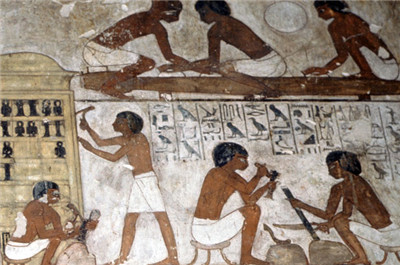
Even though they regarded the pharaoh as a kind of living god, Egyptian workers were not afraid to protest for better working conditions. The most famous example came in the 12th century B.C. during the reign of the New Kingdom pharaoh Ramses III. When laborers engaged in building the royal necropolis at Deir el-Medina did not receive their usual payment of grain, they organized one of the first recorded strikes in history. The protest took the form of a sit-in: The workers simply entered nearby mortuary temples and refused to leave until their grievances were heard. The gamble worked, and the laborers were eventually given their overdue rations.
尽管工人将法老视作活着的神,但这并不妨碍他们争取更好工作环境的勇气。最好的例证便是公元前12世纪的大罢工。当时在位的是法老拉美西斯三世,在德尔麦迪那(Deir el-Medina)修建皇家陵墓的工人们并没有像往常一样得到等量谷物,于是工人们便史无前例地组织了罢工。他们在附近的祭庙中静坐,除非不公平待遇得到受理,否则拒绝离开。然而他们这个赌打赢了,当局在了解到他们的意图后,把克扣的份额发给了工人。
6. Egyptian pharaohs were often overweight.
埃及法老大多是胖子
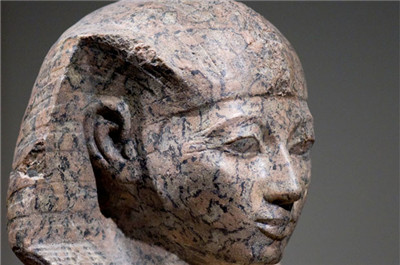
Egyptian art commonly depicts pharaohs as being trim and statuesque, but this was most likely not the case. The Egyptian diet of beer, wine, bread and honey was high in sugar, and studies show that it may have done a number on royal waistlines. Examinations of mummies have indicated that many Egyptian rulers were unhealthy and overweight, and even suffered from diabetes. A notable example is the legendary Queen Hatshepsut, who lived in the 15th century B.C. While her sarcophagus depicts her as slender and athletic, historians believe she was actually obese and balding.
在古埃及艺术中,法老常常瘦削挺拔、身材匀称,但事实并非如此。埃及人饮食中的啤酒、葡萄酒、面包、蜂蜜常常含有过多糖分,这可给埃及人的腰贡献了不少脂肪。检测木乃伊的结果显示:很多法老的身体都不够健康,体重超标,甚至患有糖尿病。典型的例子就是哈特谢普苏特王后——她生活在公元前15世纪,石棺上的王后苗条而优雅,然而很多史学家认为:这位王后不仅肥胖,而且还可能是个秃子。
7. The pyramids were not built by slaves.
金字塔并非奴隶所建
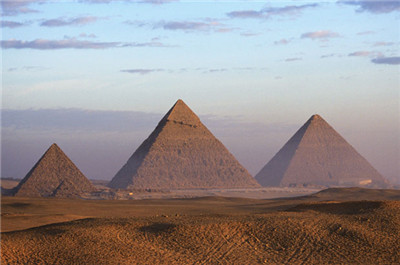
The life of a pyramid builder certainly wasn't easy—skeletons of workers commonly show signs of arthritis and other ailments—but evidence suggests that the massive tombs were built not by slaves but by paid laborers. These ancient construction workers were a mix of skilled artisans and temporary hands, and some appear to have taken great pride in their craft. Graffiti found near the monuments suggests they often assigned humorous names to their crews like the “Drunkards of Menkaure” or the “Friends of Khufu.” The idea that slaves built the pyramids at the crack of a whip was first conjured by the Greek historian Herodotus in the fifth century B.C., but most historians now dismiss it as myth. While the ancient Egyptians were certainly not averse to keeping slaves, they appear to have mostly used them as field hands and domestic servants.
修建金字塔的人过得并不好,工人的骨架上有关节炎及各种疾病的痕迹。但有证据显示,那些巨大的陵墓并非奴隶所建,而是当权者花钱请工人建的,这些要么是有一技之长的工匠,要么是一些临时工。而且,似乎一些工人还对自己的手艺感到相当自豪。纪念碑旁有一些涂鸦,上面常有他们为工友起的令人啼笑皆非的绰号:“孟卡拉(译者注:Menkaure,又译门卡拉,古埃及第四王朝的法老,大约在公元前26世纪里在位18年左右。)的酒鬼”、“胡夫的好基友”。而“奴隶在鞭声中修建金字塔”这一观点最早是由希腊史学家希罗多德在公元前5世纪提出的,但很多史学家并不认同,觉得简直是一派胡言。尽管古埃及人不反对蓄养奴隶,但这些奴隶多在田间劳作,或在家中打杂。
8. King Tut may have been killed by a hippopotamus.
杀害图特王的凶手可能是河马
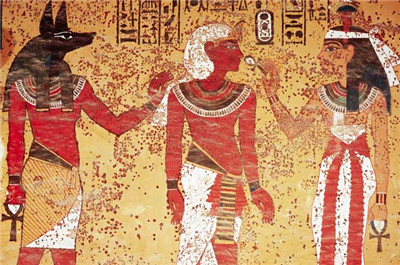
Surprisingly little is known about the life of the boy pharaoh Tutankhamen, but some historians believe they know how he died. Scans of the young king's body show that he was embalmed without his heart or his chest wall. This drastic departure from traditional Egyptian burial practice suggests that he may have suffered a horrific injury prior to his death. According to a handful of Egyptologists, one of the most likely causes for this wound would have been a bite from a hippopotamus. Evidence indicates that the Egyptians hunted the beasts for sport, and statues found in King Tut's tomb even depict him in the act of throwing a harpoon. If the boy pharaoh was indeed fond of stalking dangerous game, then his death might have been the result of a hunt gone wrong.
令人惊奇的是,人们对图坦卡蒙这位少年法老知之甚少,但一些史学家相信自己已掌握了他真正的死因。少年身上的伤口显示:在进行尸体防腐处理时,尸体里并没有心脏和胸壁。这种另类的处理方式表明,法老在逝世前受了很严重的外伤。一部分埃及古物学者认为,这一致命伤口可能是河马咬的。史料显示,埃及人的确把追猎河马当作运动,而少年法老的墓室里也有他高举鱼叉的塑像。如果这位法老那么执着于危险游戏,那只能说这次是真的玩大了。
9. Some Egyptian doctors had specialized fields of study.
部分埃及医生开始细化医学研究

An ancient physician was usually a jack-of-all-trades, but evidence shows that Egyptian doctors sometimes focused on healing only one part of the human body. This early form of medical specialization was first noted in 450 B.C. by the traveler and historian Herodotus. Discussing Egyptian medicine, he wrote, “Each physician is a healer of one disease and no more…some of the eye, some of the teeth, some of what pertains to the belly.” These specialists even had specific names. Dentists were known as “doctors of the tooth,” while the term for proctologists literally translates to “shepherd of the anus.”
一般说来,埃及的内科医师都是多面手,但也有史料显示,部分医师有时只专注于治疗人体某个部位。公元前450年,旅行家及史学家西罗多德率先发现了这种早期的医学专门化研究。谈及埃及医学,他写道:“每位医师负责研究一种疾病,仅限一种……一些研究眼睛,一些研究牙齿,一些研究肚子里的器官。”而且,这些医师还有各自的名字,如牙医被称为“牙齿专用医师”,而直肠病医师的名称直译过来则是“肛门看护员”。
10. Egyptians kept many animals as pets.
埃及人把很多动物养作宠物
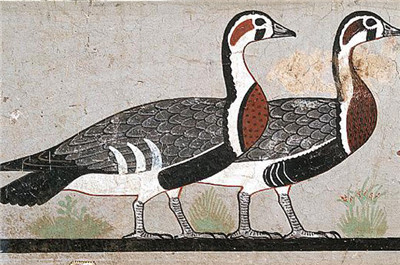
The Egyptians saw animals as incarnations of the gods and were one of the first civilizations to keep household pets. Egyptians were particularly fond of cats, which were associated with the goddess Bastet, but they also had a reverence for hawks, ibises, dogs, lions and baboons. Many of these animals held a special place in the Egyptian home, and they were often mummified and buried with their owners after they died. Other creatures were specially trained to work as helper animals. Egyptian police officers, for example, were known to use dogs and even trained monkeys to assist them when out on patrol.
埃及人将动物视为神灵的化身,创造了最早饲养家庭宠物的文明之一。埃及人还特别钟情于猫,因为猫总和太阳神的女儿芭丝特联系在一块。他们还尊敬其他动物,包括鹰、朱鹭、狗、狮子以及狒狒。大部分动物在家中的地位都不一般,死后常常会被做成木乃伊,成为主人的陪葬品。另外,一些动物还会接受训练,成为人类的助手。比如,警察出巡时会带上训练有素的狗或猴。
11. Egyptians of both sexes wore makeup.
男女都要化妆
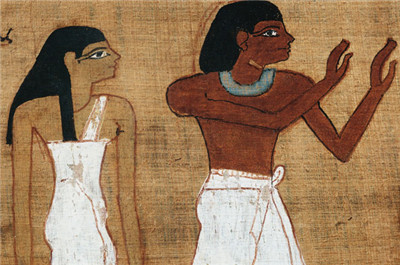
Vanity is as old as civilization, and the ancient Egyptians were no exception. Both men and women were known to wear copious amounts of makeup, which they believed gave them the protection of the gods Horus and Ra. These cosmetics were made by grinding ores like malachite and galena into a substance called kohl. It was then liberally applied around the eyes with utensils made out of wood, bone and ivory. Women would also stain their cheeks with red paint and use henna to color their hands and fingernails, and both sexes wore perfumes made from oil, myrrh and cinnamon. The Egyptians believed their makeup had magical healing powers, and they weren't entirely wrong: Research has shown that the lead-based cosmetics worn along the Nile actually helped stave off eye infections.
虚荣几乎伴随文明而生,埃及也不例外。在那里,不论男女都顶着大浓妆,他们认为这样会得到太阳神的庇荫。化妆品的原料是磨碎的矿石,如孔雀石、方铅矿,这些矿石会被制成一种称为眼影粉的东西,然后用木、骨或象牙制成的工具,抹在眼周即可。女性还会涂腮红,用指甲花染手和指甲。至于用原油、没药和桂皮制成的香水,则是男男女女都必不可少的东西。他们相信脸上的妆有一种神奇的治疗功能,而研究证明他们有一定道理:化妆品含铅,这种自上而下的化妆风潮的确有效地抑制了眼部感染。


